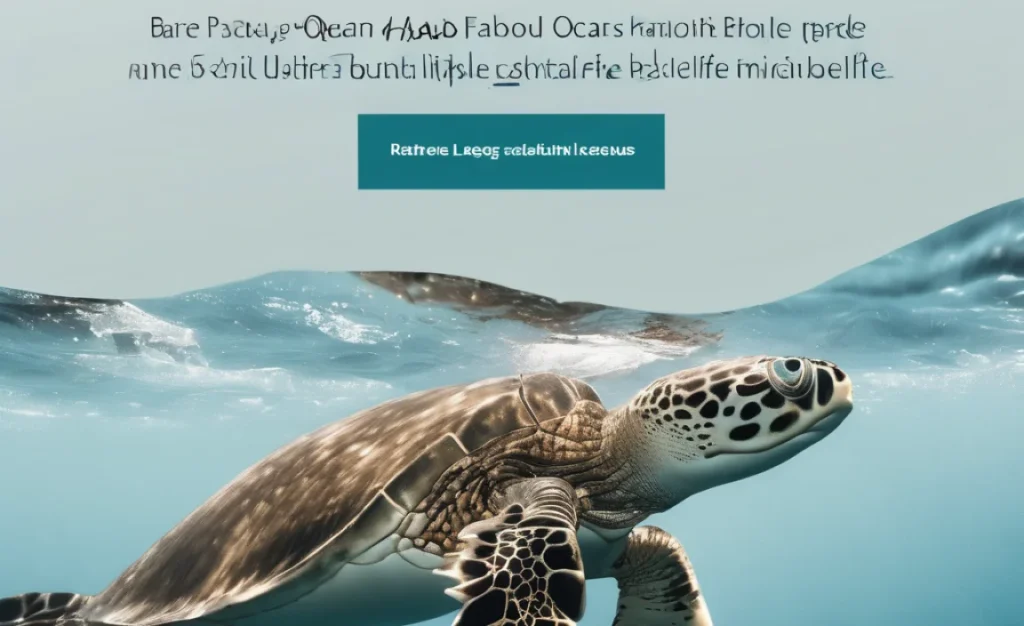Have you ever wondered what lives deep in the ocean? The ocean is a huge, mysterious world filled with amazing creatures. Some of these creatures hold secrets that will surprise you. Let’s dive into some rare facts about ocean life and discover the wonders beneath the waves!
Key Takeaways
- Ocean life holds many surprising and rare secrets.
- Deep-sea creatures have unusual adaptations.
- Some fish can glow in the dark.
- Ocean animals have unique survival skills.
- Rare facts about ocean life spark curiosity and awe.
Rare Facts About Deep-Sea Creatures
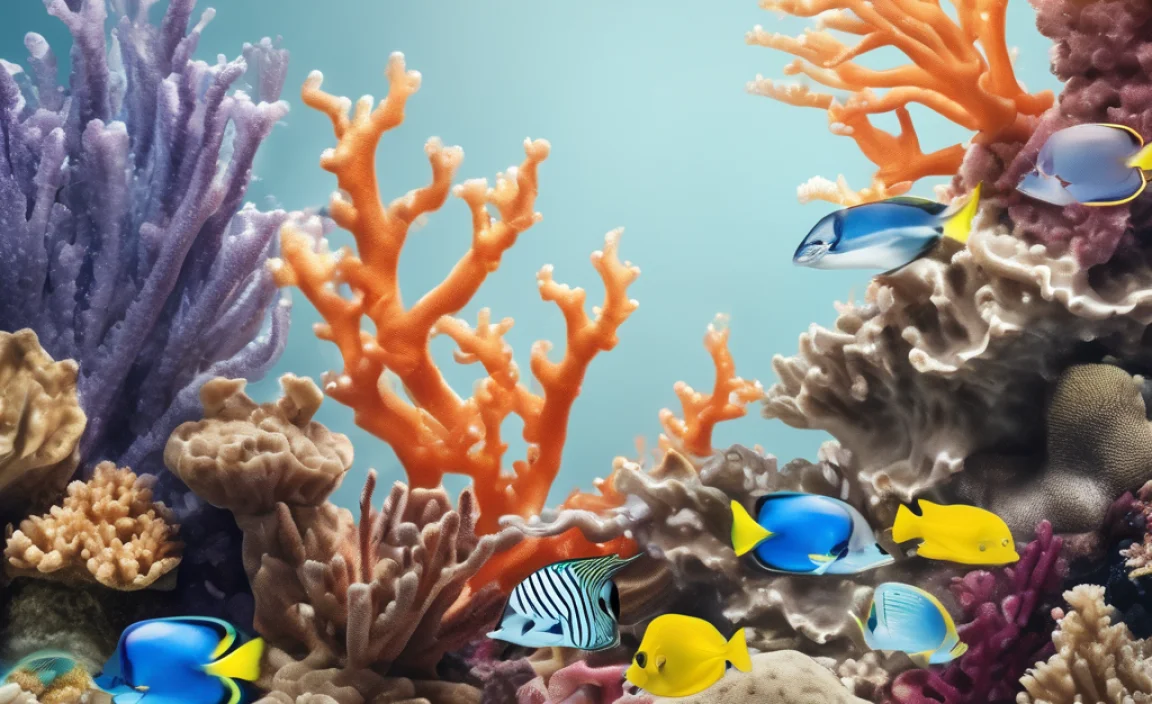
The deep sea is a dark and mysterious place. It’s home to some of the strangest creatures on Earth. These creatures have adapted in fascinating ways to survive. For instance, the anglerfish uses a glowing lure to attract prey. Deep-sea creatures often have big eyes to see in the dark. Some can even glow in the dark, a skill called bioluminescence. This magical glow helps them find food and avoid predators. The deep sea remains largely unexplored, and many secrets wait to be discovered.
- The deep sea is very dark and cold.
- Anglerfish have a glowing lure for hunting.
- Many deep-sea creatures are bioluminescent.
- Huge pressure exists in the deep ocean.
- Deep-sea creatures often have large eyes.
- New species are still being discovered.
Deep-sea creatures amaze scientists and explorers alike. Their unique features are perfect for their harsh environment. Understanding them can teach us more about survival in extreme conditions. The more we explore, the more we learn about these fascinating beings. Each adventure into the deep sea reveals new wonders.
Fun Fact or Stats : Over 80% of the ocean remains unexplored!
Anglerfish: Masters of the Deep
Have you heard of the anglerfish? These fish live in the deep sea. They have a special light on their heads. This light is like a fishing lure. It attracts prey close to them. The anglerfish waits patiently in the dark. When a small fish comes near, it strikes quickly. The anglerfish’s light is an example of bioluminescence. This ability helps it hunt and survive in the deep sea. What other creatures use light to hunt?
Bioluminescence: Nature’s Night Light
Bioluminescence is the ability of living things to make light. Many deep-sea creatures can do this. Have you seen a firefly? They glow in the dark too! The deep sea is very dark, so light helps creatures find food. It also helps them hide from predators. Some creatures use it to communicate. It’s like sending a secret message with flashing lights. Isn’t that amazing? How do they make their light?
Pressure: The Deep Sea’s Challenge
The deeper you go in the ocean, the more pressure there is. Imagine diving deep underwater. The weight of the water above presses down on you. Deep-sea creatures have strong bodies to handle this pressure. They can survive where humans cannot. This makes them special. Isn’t it incredible how they adapt to such a tough environment? What other challenges do they face in the deep sea?
Unique Adaptations of Ocean Life
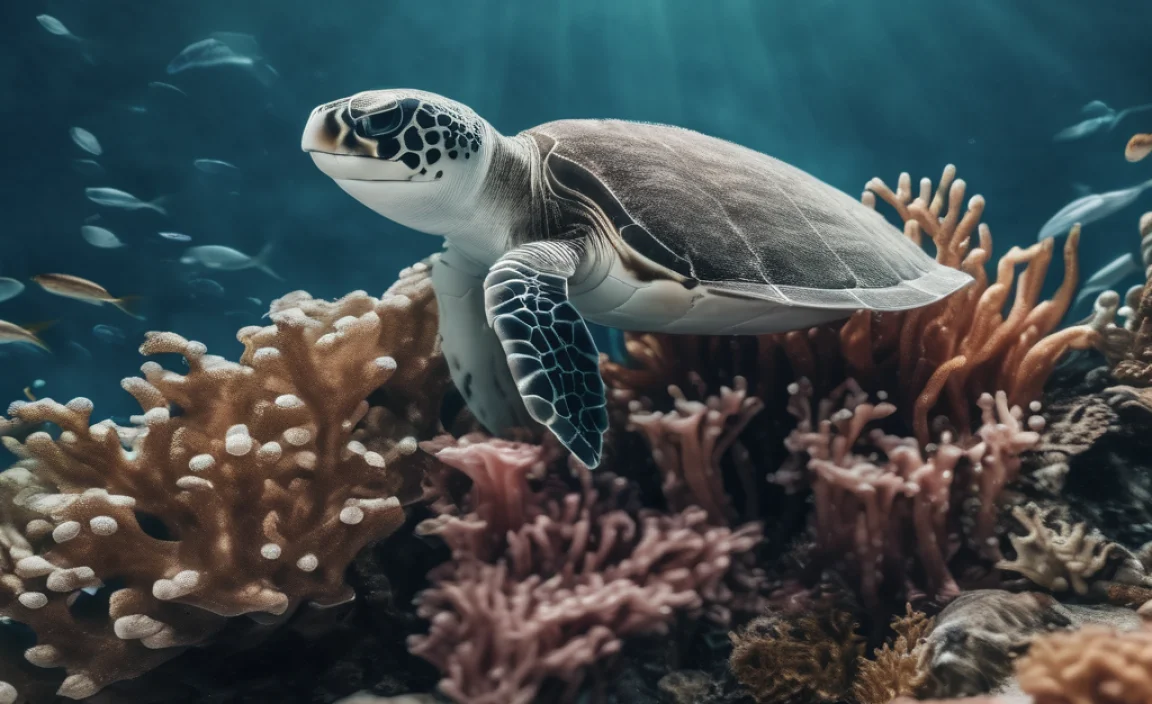
Ocean creatures have amazing adaptations. These help them survive in their unique environments. For instance, some fish can change color. This helps them hide from predators. Others, like the pufferfish, can inflate their bodies to look bigger. Many ocean creatures have developed ways to surprise or scare off predators. Each adaptation is a clever way to survive in the ocean’s challenges.
- Some fish change color to blend in.
- Pufferfish inflate to scare predators.
- Camouflage is common in many ocean species.
- Some ocean animals mimic others.
- Survival skills are varied and unique.
- Adaptations ensure survival against challenges.
These adaptations make ocean life fascinating. Each creature’s unique survival skill tells a story of life in the ocean. Exploring these adaptations can teach us a lot. They reveal the wonders of nature’s creativity and the power of survival. How amazing is it that these creatures can thrive where others cannot?
Fun Fact or Stats : The pufferfish can inflate up to three times its size!
Color-Changing Wonders
Have you ever seen a fish change color? It’s like magic! Some fish can change their colors to hide. This is called camouflage. It helps them avoid being seen by predators. Imagine hiding in plain sight! Isn’t that clever? Some ocean creatures are masters of disguise. They can blend into their surroundings perfectly. How do they know which colors to change to?
Pufferfish: Inflatable Defense
The pufferfish is a small but mighty creature. When threatened, it puffs up like a balloon. This makes it look bigger and scarier. Predators might think twice before trying to eat it. The pufferfish’s spiky skin adds to its defense. Isn’t it fascinating how this little fish can defend itself so well? What other tricks does it have?
Mimicry: Nature’s Copycats
Some ocean animals use mimicry to survive. They copy the appearance of other animals. For example, the mimic octopus can look like a dangerous sea snake. This helps it scare off predators. Mimicry is a clever way to stay safe in the ocean. Isn’t it amazing how nature creates such smart survival strategies? How do they learn to mimic others so well?
Unusual Behaviors in Ocean Animals
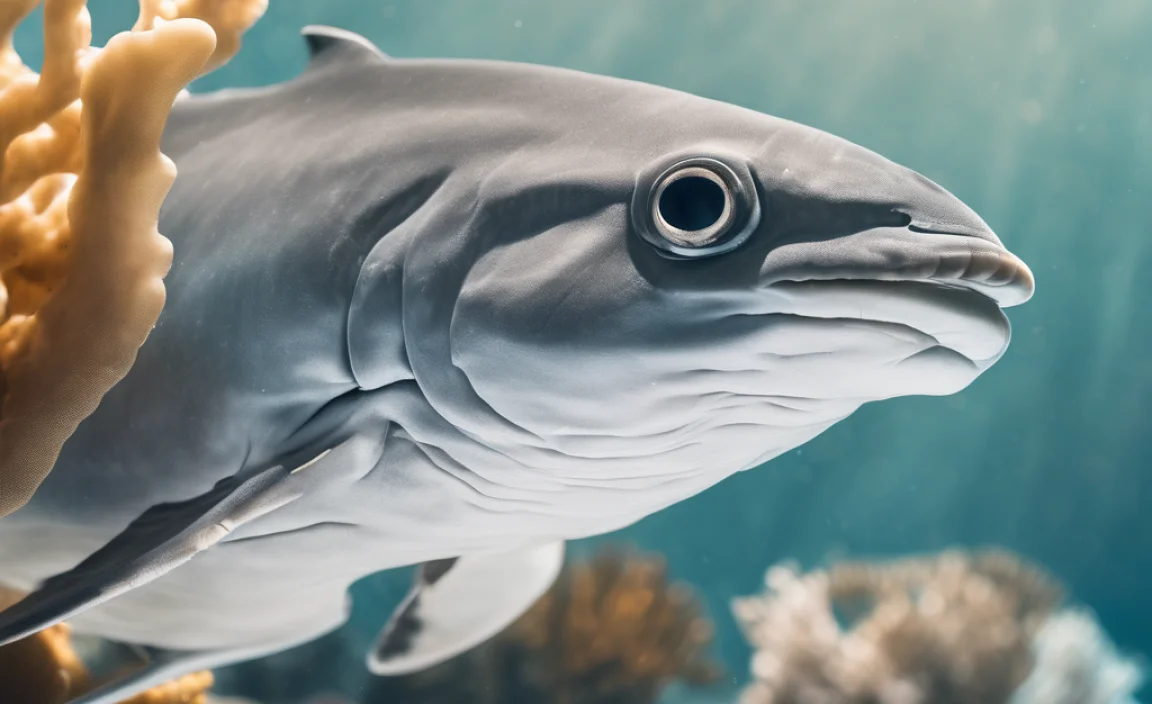
Ocean animals exhibit strange and fascinating behaviors. For example, dolphins sometimes use tools. They protect their noses with sponges while hunting. This behavior is rare in animals. Clownfish, famous from movies, live in sea anemones. They have a special coating that protects them from stings. These unique behaviors show how clever ocean life can be.
- Dolphins use tools while hunting.
- Clownfish live among sea anemones.
- Octopuses can open jars.
- Seahorses have unique parenting roles.
- Whales communicate with songs.
- Unique behaviors aid in survival.
Each behavior is a testament to the intelligence of ocean creatures. Observing these behaviors gives us insights into their world. They’re not too different from us in finding ways to make life easier. Isn’t it wonderful how they use their surroundings to their advantage? What other clever tricks do they have?
Fun Fact or Stats : Dolphins have been known to teach each other new tricks!
Dolphins: Smart and Playful
Dolphins are known for their intelligence. They play games and use tools. Have you seen a dolphin balance a ball? They use sponges to protect their noses while hunting. This shows their problem-solving skills. Dolphins communicate with clicks and whistles. They even have names for each other! Isn’t it cool how they have their own language? What else can they do?
Clownfish and Their Anemone Homes
Clownfish live in sea anemones. These fish have a special coating. It protects them from the anemone’s stings. This is a safe home for them. In return, the clownfish cleans the anemone. They have a symbiotic relationship. This means they help each other. Isn’t it amazing how they support one another? What other ocean friendships exist?
Seahorses: Unique Parents of the Sea
Seahorses are unusual when it comes to parenting. Male seahorses carry the babies! The female lays eggs in the male’s pouch. He then carries them until they hatch. This is rare in the animal kingdom. Isn’t it fascinating how the roles are reversed? How do they manage this unique parenting style?
The Mystery of Ocean Giants
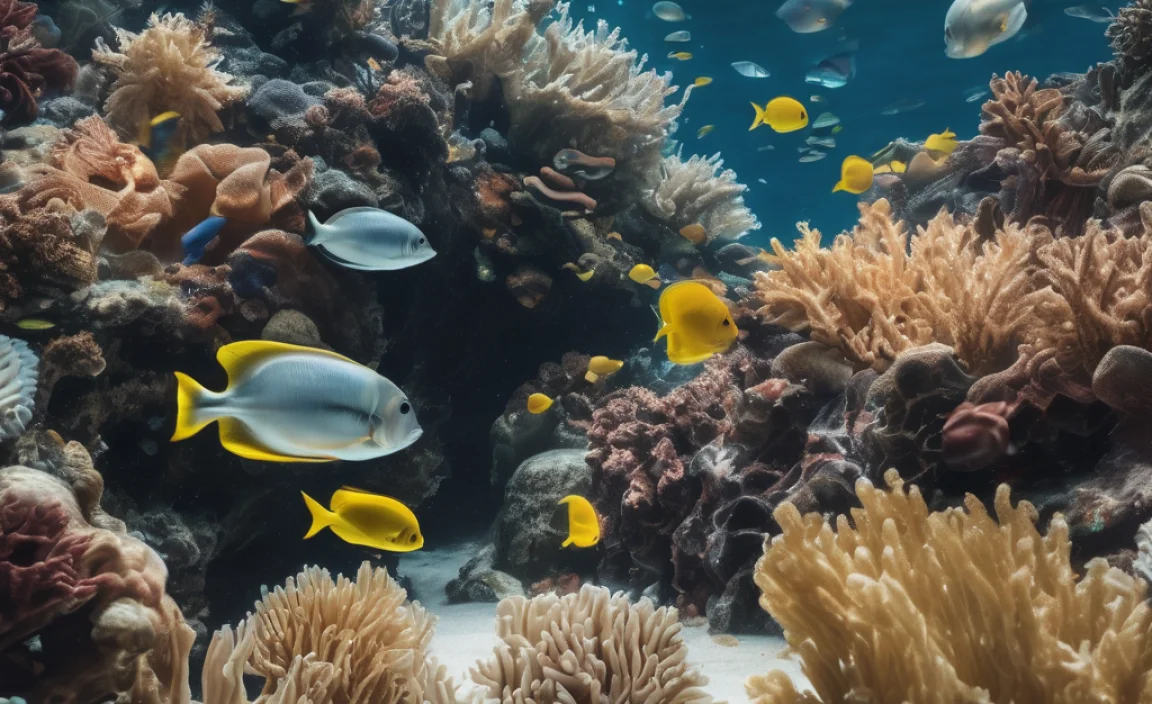
Ocean giants like whales and sharks are awe-inspiring. These creatures roam the vast ocean with grace. Whales communicate through songs that can travel miles. Sharks have been around since the time of dinosaurs. They have incredible senses for hunting. Despite their size, many ocean giants are gentle.
- Whales sing to communicate.
- Sharks have a strong sense of smell.
- Ocean giants are gentle yet powerful.
- Many giants are migratory.
- Ocean giants play key roles in ecosystems.
- They inspire wonder and curiosity.
The size and power of ocean giants fascinate us. They remind us of the ocean’s vastness and mystery. These creatures play important roles in the ocean ecosystem. Understanding them helps us appreciate and protect our oceans. What stories do these giants tell through their songs and journeys?
Fun Fact or Stats : Blue whales, the largest animals on earth, can weigh up to 200 tons!
Whale Songs: Echoes of the Ocean
Whales are known for their haunting songs. These sounds can travel long distances underwater. Each whale species has its own song style. Whales use these songs to communicate. They can warn each other of danger or find mates. Isn’t it amazing how these giant creatures talk to each other underwater? What do their songs sound like?
Sharks: Ancient Ocean Predators
Sharks have been around for millions of years. They have incredible adaptations. Sharks can smell a drop of blood from miles away. Their sharp teeth are perfect for catching prey. Despite their fearsome reputation, not all sharks are dangerous to humans. Isn’t it amazing how they have survived for so long? How do they stay at the top of the food chain?
The Gentle Giants: Manta Rays
Manta rays are known as the gentle giants of the sea. They glide gracefully through the water. Manta rays feed on tiny plankton. Despite their size, they pose no threat to humans. Manta rays have unique spots on their bodies, like fingerprints. Isn’t it fascinating how gentle they are despite their size? How do they navigate the vast oceans?
Conclusion
The ocean is full of wonders and rare facts about ocean life. From deep-sea creatures to ocean giants, each has its secrets. Learning about them inspires us to protect the ocean. What mysteries will we uncover next?
FAQs
Question: What is bioluminescence?
Answer: Bioluminescence is the ability of living things to produce light. Many deep-sea creatures use this ability. It helps them find food and avoid predators. This magical glow is one of the rare facts about ocean life.
Question: How do deep-sea creatures survive high pressure?
Answer: Deep-sea creatures have special adaptations. Their bodies can withstand the high pressure of the deep ocean. This allows them to live where few others can. It’s one of the rare facts about ocean life that fascinates scientists.
Question: Why do some fish change color?
Answer: Some fish change color for camouflage. This helps them hide from predators. It can also be used to communicate with other fish. Color-changing is one of the many survival skills found in ocean life.
Question: What is the role of the male seahorse?
Answer: In seahorses, the male carries the babies. The female lays eggs in his pouch. He then nurtures them until they hatch. This unique parenting role is rare in the animal kingdom.
Question: Are all sharks dangerous to humans?
Answer: No, not all sharks are dangerous. Most shark species are harmless to humans. They play a vital role in ocean ecosystems. Understanding them helps us appreciate their place in the ocean.
Question: How do whales communicate?
Answer: Whales use songs to communicate. These songs can travel long distances underwater. They use them to find mates and warn of danger. It’s one of the incredible behaviors seen in ocean giants.


